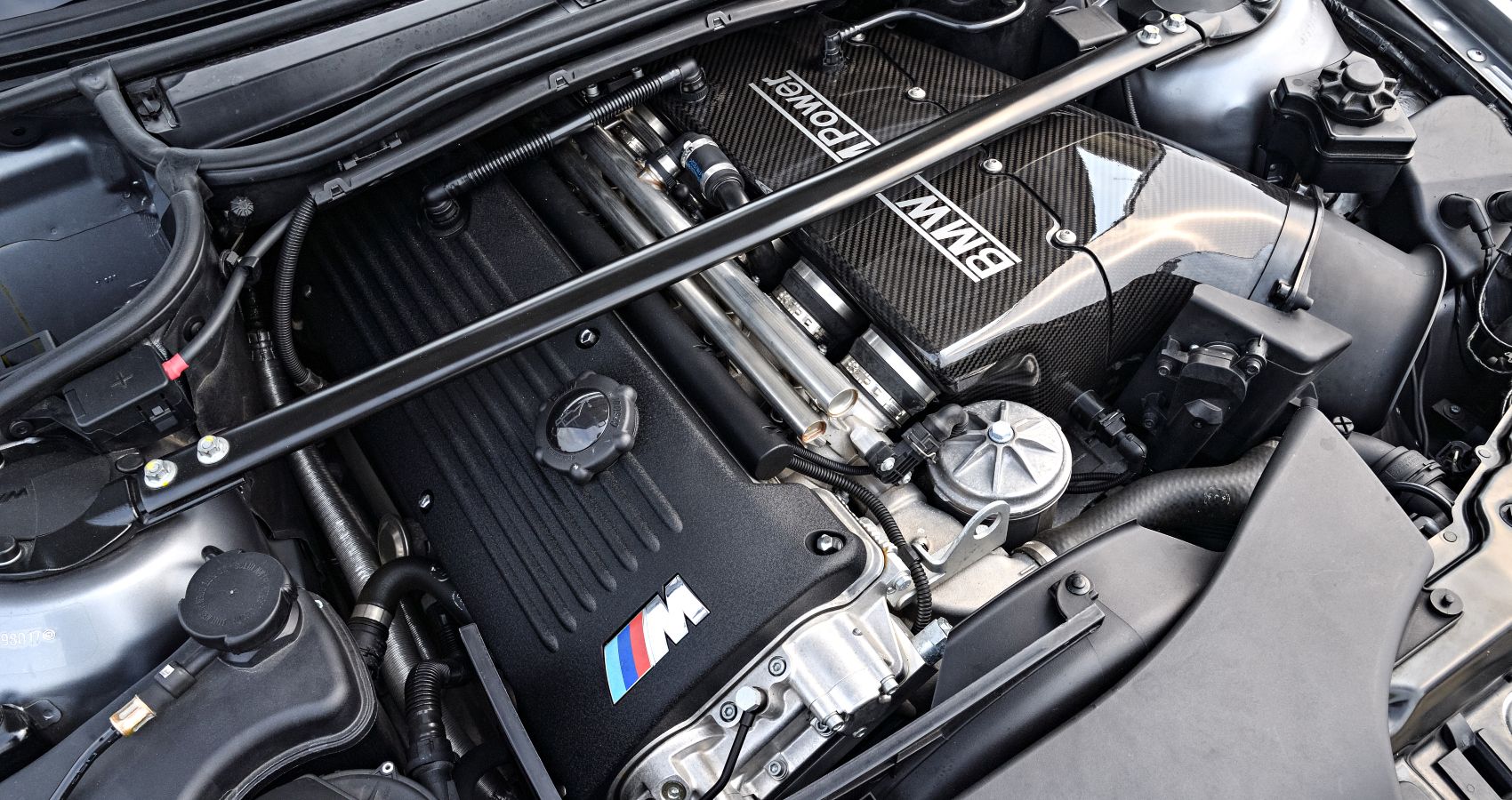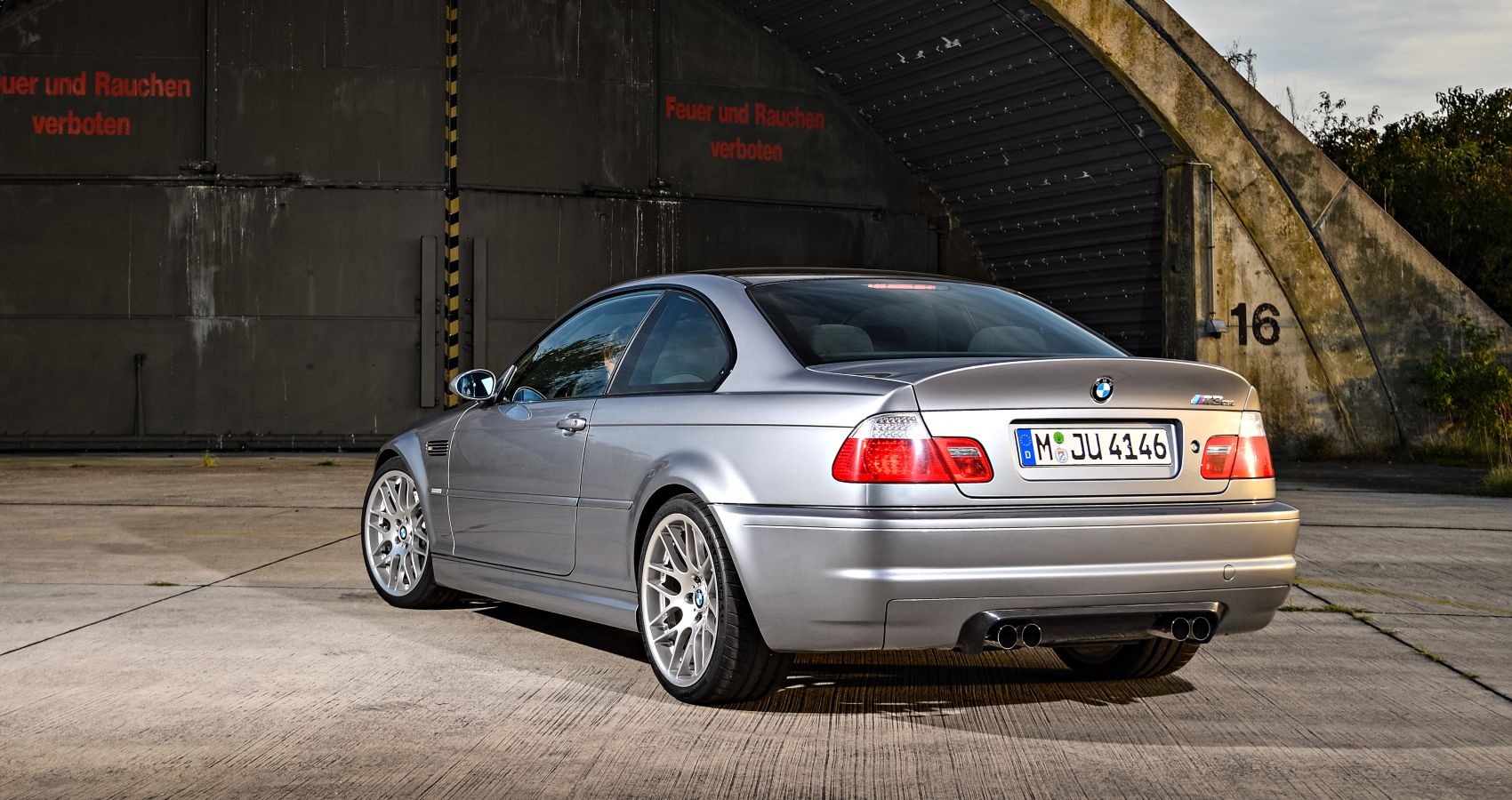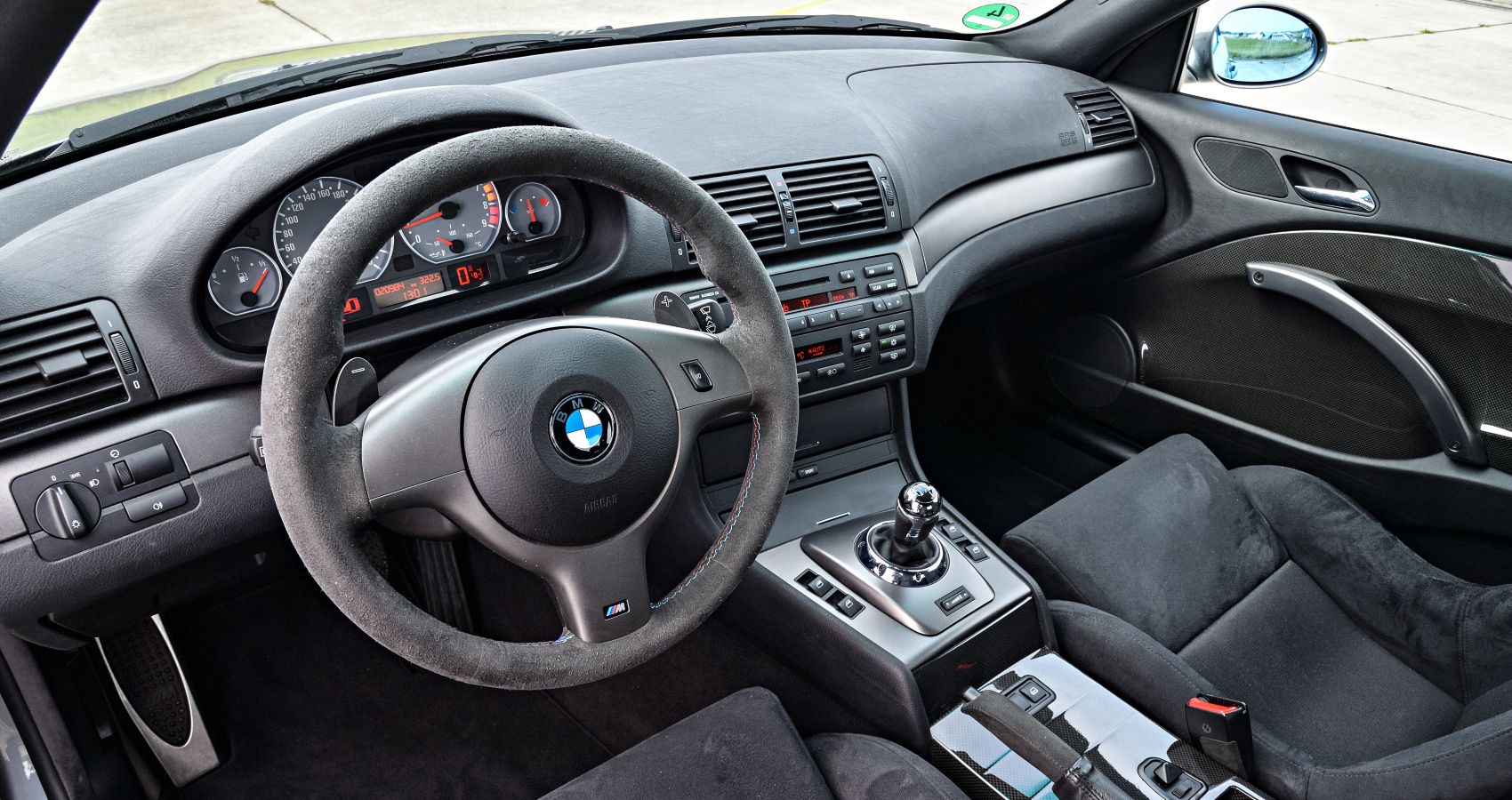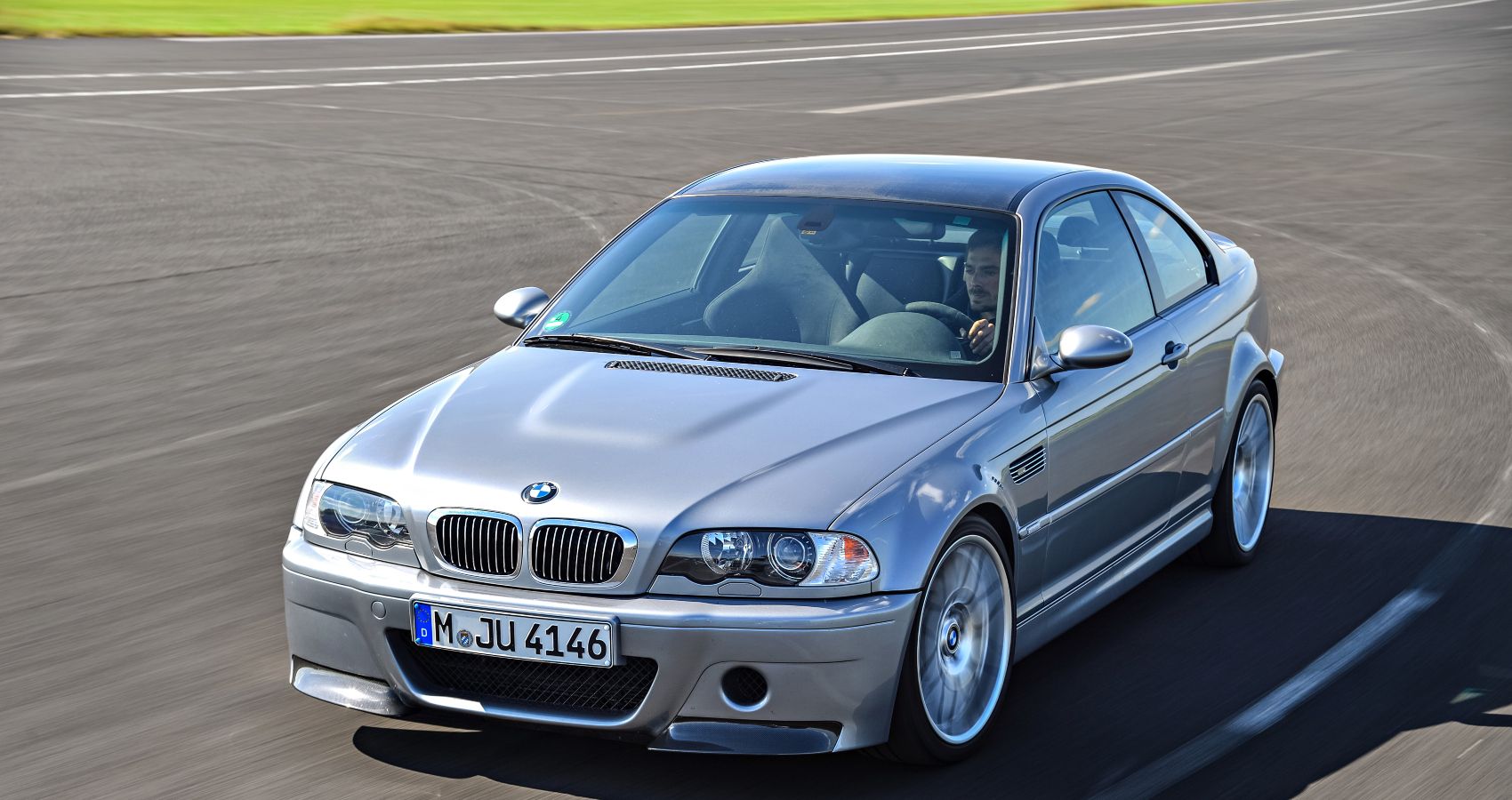[ad_1]
The iconic BMW M3 CSL is an optimized version of the highly acclaimed E46 M3 Coupe. The exclusive CSL moniker, which stands for Coupe Sport Lightweight, harks back to the legendary BMW 3.0 CSL of the ’70s. After almost 30 years, BMW has revived the exclusive CSL name for the ultimate E46 M3. No doubt, BMW demonstrated to the automotive world what its motorsport department is capable of producing. It’s true to say the iconic E46 M3 CSL is still considered by many as the best of the best.
The mighty M3 CSL made its debut in 2003, set to take on Porsche’s hardcore 911 GT3. The CSL received mixed opinions at launch, mainly due to the price difference over the extremely capable standard M3 Coupe. However, as the third generation M3 was the last in the series to have the naturally aspirated inline-six, this lighter and sharper CSL model has become the most sought-after M3. Indeed, the CSL offered the pure driving experience of the E46 M3 and scintillating performance to rival most sports cars and even some supercars of the time.
No doubt, BMW raised the bar with its lightweight M3. What’s more, the CSL could lap the Nurburgring in 7.50 minutes, which was impressive in 2003.
The German automaker limited the production of the M3 CSL to only 1383 units which means it’s a rare sight on the road. Furthermore, no CSLs crossed the shores of North America. The CSL seems to have developed a cult status as the ultimate M car. In 2003, a new example of the CSL would have cost $72,500, almost $25,000 more than the standard E46 M3 Coupe. According to classic.com, prices for low mileage and unmolested examples now average around $104,000!
The Fabulous Six-Cylinder Engine Of The M3 CSL Was Beefed-Up
Under the sleek hood of the M3 CSL sits a 3.2-Liter naturally aspirated six-cylinder powerplant, tweaked by BMW’s engineers to develop more power. The S54 engine now delivered 360 horsepower at 7900 rpm and 273 lb-ft of torque.
Surprisingly, BMW only offered the CSL with the controversial sequential six-speed SMG II transmission, which was an option on the standard M3. The SMG II allowed the driver to select gears via the F1-style paddles behind the steering wheel or by tapping the alloy gear lever.
Other enhancements included bigger brakes, specially developed springs and dampers, a new air intake system with a large carbon fiber air collector, and enlarged exhaust valves. Moreover, BMW also used a thin-walled exhaust system to save more weight.
Muscular Design Of M3 CSL Still Looks Sharp Even Today
Aesthetically, the design of the M3 CSL still looks stunning today. Distinguished by its curved Integrated rear spoiler on the trunk lid, the CSL also came with special door sills, twin carbon fiber front splitters, a rear diffuser, and a distinctive air duct in the new front bumper for generating efficient airflow to the engine. Furthermore, the engineers at BMW made the CSL much lighter in construction, using glass-reinforced plastic for its body panels to achieve 50:50 weight distribution.
Tipping the scales at 3053 lbs (1385 kg), the CSL was 242.5 lbs (110 kg) lighter than the standard M3 Coupe. In addition to the aluminum bonnet and thin glass used for rear windows, the CSL became the first M car to have a carbon fiber roof, which lowered the center of gravity.
What’s more, the accentuated wheel arches gave the M3 CSL a muscular stance, especially with the lightweight 19-inch alloy wheels fitted with semi-slick Michelin Pilot Sport rubber as standard. And, not forgetting the modified quad tailpipes at the rear that look menacing and sound brutal. Only two colors were available with the CSL: Sapphire Black Metallic and Silver Gray Metallic.
E46 M3 CSL Interior Was Stripped Of Luxuries To Save Weight
The racecar-derived interior of the M3 CSL is awash in Alcantara suede. No doubt, weight-saving measures continued in the cabin, including a carbon fiber center console and door cards. Further enhancements included fiberglass-backed racing bucket seats. The air-conditioning and the audio system remained a no-cost option.
The Alcantara steering wheel in the M3 CSL only came with a single button for activating ‘M track mode’.
Performance Of The M3 CSL Is Simply Electrifying
The M3 CSL’s fabulous inline six-cylinder is a masterpiece. Stamp your foot on the gas and enjoy the incredible acceleration from the engine as you exceed 7500 rpm. What’s more?! The intake noise of that glorious six-cylinder, coupled with the brutal sound of the quad tailpipes, is simply addictive. The M3 CSL feels more like a race car, reaching 60 mph in a mere 4.6 seconds from a standing start and topping 155 mph before hitting the limiter. However, buyers with a motorsport license could have the limiter removed.
Press the magic M button on the steering wheel, and you can exploit the full potential of the CSL’s agility on track, enabling the driver to push the car to its limits. Although performance may seem modest by today’s standards, the CSL’s high revving powerplant and incredible chassis balance make BMW’s lightest M3 an extremely capable driver’s car. Then there’s the sharp steering and stopping power, although, with its semi-slick tires, you would have to think twice about driving in the wet.
Perhaps the only flaw in the CSL’s armor is its six-speed SMG II transmission. Although the technically advanced box is competent with rapid downshifts, it’s not as smooth or clinical as a manual box. Motoring aficionados would agree a manual transmission would have perfectly completed the M3 CSL package.
Undoubtedly, the M3 CSL remains BMW’s purest Ultimate Driving Machine.
[ad_2]
Source link




